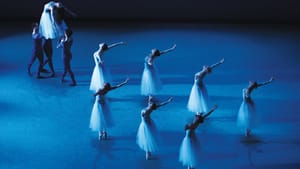Stay in the Loop
BSR publishes on a weekly schedule, with an email newsletter every Wednesday and Thursday morning. There’s no paywall, and subscribing is always free.
After dancing, another shot at ballet
How Alexander Iziliaev went from dancer to photographer at the PA Ballet

At some point in their training, dancers have to make the fateful decision: to pursue dance as an enjoyable pastime, or to shoot for the stars. For photographer and former Pennsylvania Ballet principal dancer Alexander Iziliaev (“Sasha” to his friends), that moment came at age 11, and he almost missed his shot.
“At that time, we only had three major ballet schools in Russia, and they would take you at 10 years old,” he remembers.
That was too young for his mother, but one ballet school, 1,000 miles away in the city of Perm, accepted 11-year-olds. Iziliaev persisted and won a prized spot, leaving behind friends, family, and his other passion.
“I loved photography as a child, but when ballet came in, photography went to the side,” he says.
A whole life ahead
He never did dance professionally in Russia. America beckoned. “You know, the Berlin Wall fell, Gorbachev, Yeltsin,” Iziliaev says. At 19, he had nothing to lose: “Your whole life is ahead. It was just the last three years of my training in school when we started getting the videotapes, with Baryshnikov, or with Nureyev. [So] you want to seek out how people dance in this country. You start getting to see that there is a lot of dancing out there.” It was the age of détente, so he knew he could go back if things didn’t work out.
But Iziliaev never truly gave up photography. “Video was there always,” he says, “because you could see the dance, how you look, how the other people look, you do it like a working tool. And experimenting I always liked that.” But toward the end of his dancing career, photography became a way to capture the memories.
“I knew it was going to end soon,” Iziliaev says. “I decided to start taking pictures so that I can show the world the inside view behind the scenes, and at the same time have a memory the dancers can look at later on. They can show their grandchildren that they did something beautiful and magical.”
What the photographer can’t see
The words aptly describe his photo of Balanchine’s Serenade. “This picture was taken when I was still dancing,” he says. “It is one of my favorite ballets. That last moment is so magical, it is so beautiful, and so dreamy because they are going into this light, and the girls in the perfect position.”
This is where being a dancer makes the difference. “So many times I have to photograph ballets that I danced myself, and I know the position they are trying to do and that is the image I want to capture,” Iziliaev says. He knew the shot he wanted because he was dancing it. Iziliaev said that it took three different performances to get the picture. “I wanted to have that still moment, like, Ah! And the perfection of the dancers as well.” But perfection isn’t easy. At one performance, they moved more quickly and he did not capture all the dancers in the shot; in another, the positions of the ballerinas’ arms were not quite perfect.
For that third performance, he says, “I danced the other ballet. So when I finished, I ran up to the balcony for the image. It’s a moment that anybody who sees that ballet remembers. Whether you watch from the balcony or the orchestra, that moment is magical.”
Iziliaev, who uses Canon cameras and primarily two wide-angle lenses, said that he has another advantage as a dancer and photographer. Dancers trust that he will judge his photos as they would themselves. “There could be something, their foot is not in the right place; a knee may be slightly bent. Although the corps looks gorgeous and the background looks amazing, the dancer himself hasn’t hit the position yet or it’s too late,"he observes. A newspaper’s photographer might not notice those things, he says, but the dancer will.

Family photo
It was more than a love of photography that brought him back to his childhood passion. The admission almost seems an afterthought: “I started photographing my wife, so that we have some kind of a record,” he says. Iziliaev met Pennsylvania Ballet’s principal dancer Aranxta Ochoa when they were dancing for the Hartford Ballet. They married eight years later, when he joined the company in 2000. I could almost hear him smiling through the telephone as he described the photo of Ochoa as Giselle with a daisy in her hand.
“That was her last performance. She stopped dancing after Giselle,” he says. They knew they had what they needed for marketing on that Saturday, so the studio was closed when they decided to return on Sunday with Adrian, their 4-year-old son. “We were playing around with the different lights, the magaritas [the European name for daisies].”
In the ballet, Giselle plucks the petals—he loves me, he loves me not—and, Iziliaev says, “I wanted all those petals flying. I would try to throw the flowers high enough to run back to the camera. The petals did fly down, but they did it really quick.” So he recruited Adrian, giving him two full fistfuls of petals, “but at four years old, he had such tiny hands, so it’s not like he can hold a lot to throw. So it became fun, we were trying to throw them, and finally captured the image.” The photo bubbles with joy.
Iziliaev’s eye of a dancer allows him to see the shot before he takes it. But what's behind his vision is love—of the magic and beauty of dance, and sometimes, the magic and beauty of love itself.
Sign up for our newsletter
All of the week's new articles, all in one place. Sign up for the free weekly BSR newsletters, and don't miss a conversation.

 Camille Bacon-Smith
Camille Bacon-Smith